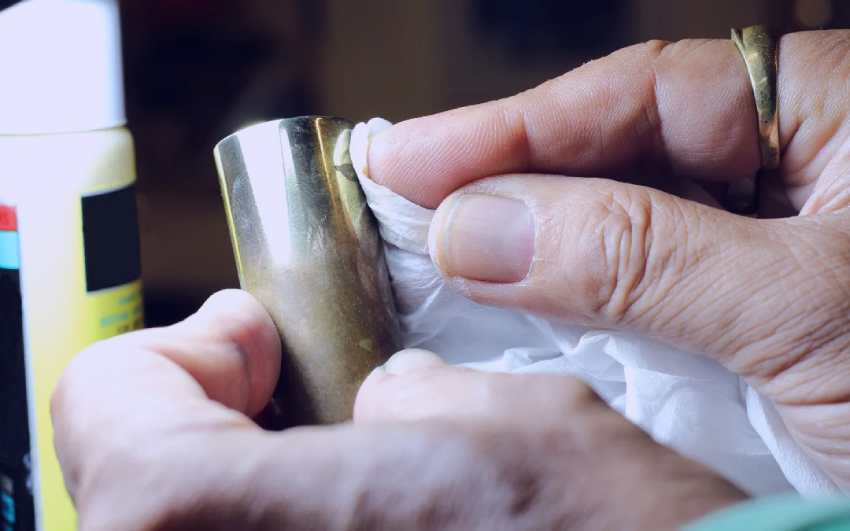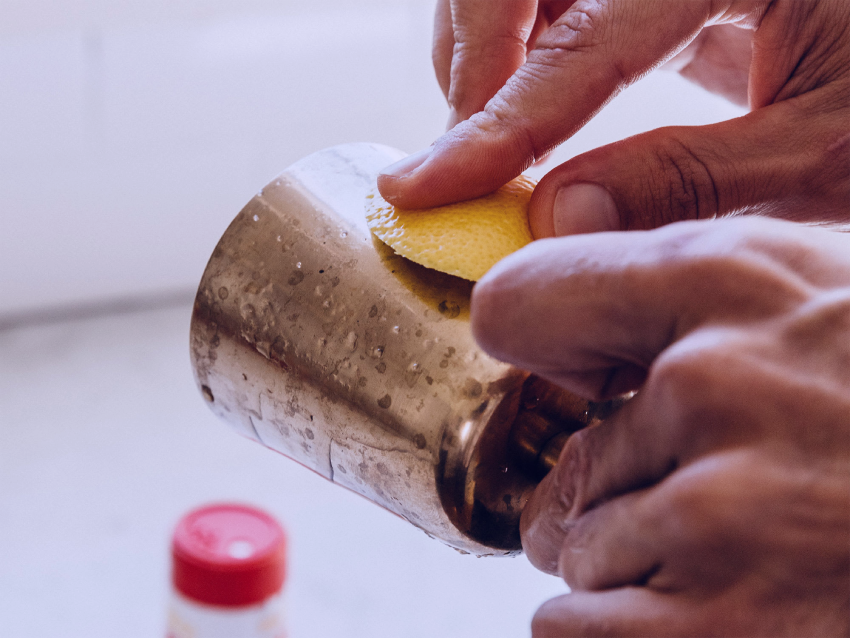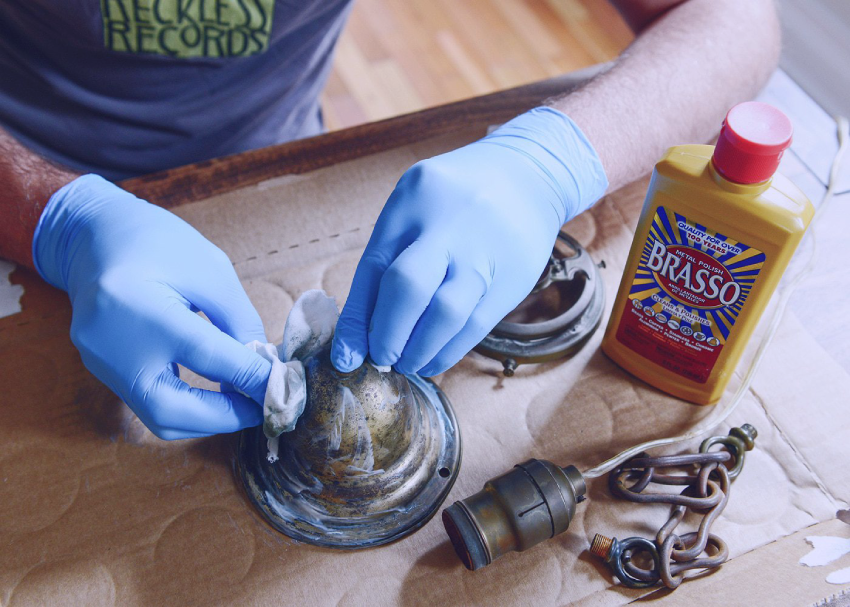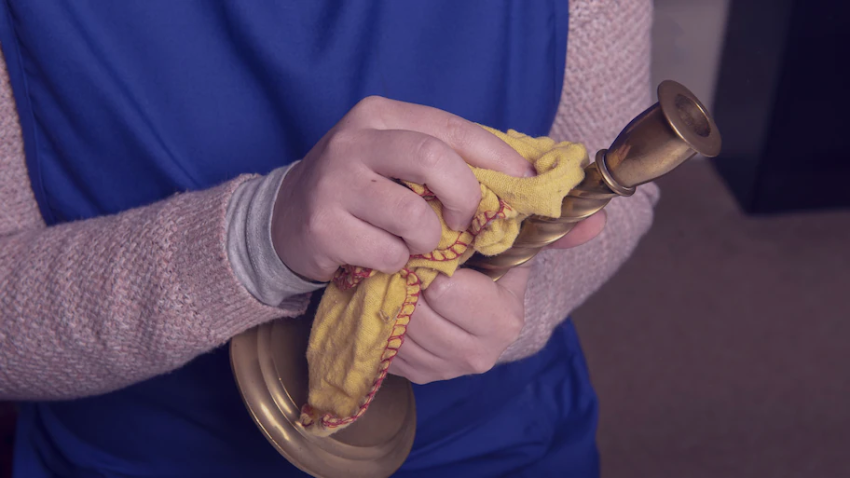Traditional Methods for Cleaning Brass
Brass has a familiar shine that radiates antiquity and elegance. Traditional brass cleaning methods using compounds such as Brasso and ammonia maintain this shine while eliminating discoloration. Knowing how to clean brass with these effective but strong solutions will keep your item damage-free and sparkling clean.
Using Brasso or Metal Polish
Brasso, a household staple, does wonders for brass items, delivering a gleaming, mirror-like finish. To use it effectively, apply a dab to a soft cloth, then prepare to rub it onto the brass.
The application of Brasso requires patience and a gentle touch, carefully shining without scratching the surface. Rubbing in a firm, circular motion, then buffing off the excess paste until it shines, guarantees a beautiful gleam every time.
Ammonia Solution
When cleaning brass with an ammonia solution, always prioritize safety. Ensure proper ventilation and wear gloves and eyewear. Mix one part of ammonia into eight parts of water, and apply the diluted solution sparingly to a small section of the brass item.
Soak your brass items in the diluted mixture for a few minutes, then scrub gently with a soft cloth or toothbrush. Rinse the item thoroughly to avoid leaving a dull finish due to residue.
Cleaning Tips for Specific Brass Items
To keep brass items glistening, it’s important to approach each brass piece carefully. Various types of brass items require different care methods that will gently clean them while leaving them in top condition. In these steps, you’ll learn the best methods to clean a variety of brass pieces that will leave them glistening.
Cleaning Brass Candlesticks and Jewelry
For daily maintenance of brass jewelry and candlesticks, gently dust them off and use a soft damp cloth to wipe them. Jewelry items may require a soft toothbrush to access tiny corners. Using natural cleaning agents, such as lemon juice and baking soda will keep the brass pieces shimmering casually without disrupting the patina.
You can also use vinegar mixed with salt to create a gentle but effective cleaning solution. For brass jewelry, a paste of baking soda and water applied with a soft cloth can restore their shiny appeal while preserving their patina.
To breathe new life into your brass candlesticks and jewelry, apply a thin coat of natural oil, like olive or linseed oil, to protect them from experiencing rapid tarnishing.
Removing Corrosion from Brass
To tackle stubborn corrosion on brass, target the small areas first. Create a paste of baking soda and lemon juice applied with a toothbrush. Rinse it off, dry, and voila, your brass item is rust-free.
When brass tools fall victim to rust, don’t panic. Instead, soak them in a mixture of equal parts white vinegar and salt overnight. Rinse off the following morning, and relish in the sight of your corrosion-free brass tools.
Cleaning Brass Door Knobs, Handles, Lamps, and Plates
Door knobs, handle lamps, and brass plates are beautiful decorative items that can elevate your home’s aesthetic when shinily polished. A gentle rub with a mixture of flour, salt, and vinegar can restore these items to their glorious shine.
Maintaining the shine on your brass plates, handles, and door knobs doesn’t have to be a strenuous activity. With a simple solution of mild detergent and warm water, these items can brighten up your space, adding a touch of elegance and timeless beauty.



